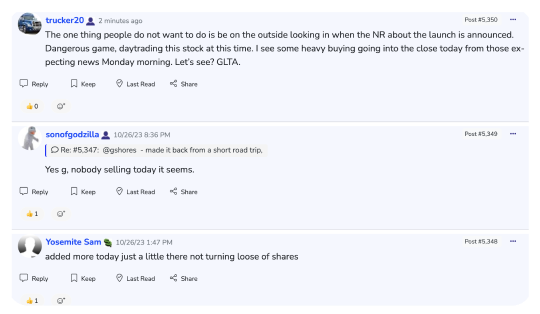Wednesday, October 09, 2024 8:58:31 AM
Industry Events
Submit An Event
Home
News
Courts
SCOTUS Denies Challenges to Section 101 Test, Trademark Domicile Rules and Obviousness-Type Double-Patenting Analysis
Steve Brachmann image
Steve Brachmann
16 hours ago 1
Share
“Eolas noted the myriad calls on SCOTUS to clarify the Section 101 eligibility test in Federal Circuit rulings… and from the U.S. Solicitor General.”
SCOTUSOn October 7, the U.S. Supreme Court issued an order list that included cert denials for several intellectual property cases that were presented to the nation’s highest court. In rendering those denials, the Supreme Court leaves in place an appellate ruling invalidating patents claiming improvements to computer networking technologies under Section 101’s abstract idea jurisprudence. U.S. Patent and Trademark Office (USPTO) requirements on listing domicile addresses on trademark applications, and the Federal Circuit’s application of obviousness double-type patenting doctrine in the patent term adjustment context, were also allowed to stand due to these denials.
Eolas Technologies v. Amazon.com: Another Call for Section 101 Clarity Goes Unheeded
Web development company Eolas Technologies was formed as a spinoff company from the University of California, San Francisco, to commercialize early web technologies in the mid-1990s. This included improvements to the distribution of hypermedia across the World Wide Web, claimed in patents that Eolas asserted in U.S. district court against Big Tech giants Amazon and Google. Eolas’ patent claims were invalidated by the Northern District of California as directed to a patent-ineligible abstract idea under 35 U.S.C. § 101. On appeal, the Federal Circuit faulted the district court for not recognizing the patent’s claimed improvements to configuration requirements in the nascent web, but still concluded that “interacting with data objects on the World Wide Web is an abstraction,” affirming the Section 101 ruling.
Eolas filed its petition for cert this May challenging the abstract idea determination as conflicting with the Supreme Court’s 2014 ruling in Alice Corp. v. CLS Bank International, which confirmed the patent eligibility of claims “improv[ing] an existing technological process.” While the Federal Circuit issued rulings finding software claims patent-eligible when directed to improvements in computer functionality, Eolas’ brief notes that appellate rulings on Section 101 have strayed from the scope of patent eligibility defined by Alice.
Echoing concerns raised by many commentators on the expansion of abstract idea jurisprudence, Eolas’ petition also contended that the Federal Circuit’s analysis improperly blended other patentability statutes, including the written description requirement under 35 U.S.C. § 112, into the Section 101 patentability analysis. Eolas noted the myriad calls on the Supreme Court to clarify the Section 101 eligibility test in Federal Circuit rulings like American Axle & Manufacturing v. Neapco Holdings, and from the U.S. Solicitor General, which has urged SCOTUS to grant cert on Section 101 issues in five petitions that were later denied certiorari.
Chestek PLLC v. Vidal: Domicile Reporting Requirements for Trademark Owners Survive Challenge
In 2019, the USPTO promulgated a final rule under its general rulemaking authority codified at 35 U.S.C. § 2(b)(2) that required all trademark applicants to disclose their domicile address on their applications. Trademark law firm Chestek PLLC challenged the USPTO’s refusal of its own trademark applications for failure to list a domicile address, arguing that Section 2(b)(2)’s cross-reference to 5 U.S.C. § 553 required the agency to follow notice-and-comment procedures required by the Administrative Procedures Act (APA). Earlier this year, the Federal Circuit affirmed the agency’s refusal after ruling that the reporting requirement does not alter the substantive standards of trademark examination, making it a procedural rule properly promulgated without notice-and-comment rulemaking.
Filing its petition for cert this May, Chestek PLLC cited rulings from several regional circuits finding that statutory cross-references to Section 553 are not simply directed to that statute’s notice-and-comment exceptions. Further, Chestek argued that the Federal Circuit’s ruling improperly vitiated Section 2(b)(2)(B)’s cross-reference to Section 553, “evidently designed to serve [the] concrete function” of applying Section 553’s requirements to agency rulemaking that was historically only procedural. Chestek also noted privacy concerns that would have been easily identified through notice-and-comment rulemaking, while amicus filings highlighted democratic concerns posed by the USPTO Director’s unilateral ability to promulgate rules.
Cellect LLC v. Vidal: Agency Prosecution Delays Do Not Impact ODP Analysis
After Cellect filed a patent infringement suit against Samsung Electronics over image-sensor technology, Samsung requested ex parte reexamination of Cellect’s patents, including three that received patent term adjustments (PTA) under 35 U.S.C. § 154(b) for the USPTO’s delay in prosecuting patent applications. Cellect’s patent claims were invalidated during those proceedings for “obviousness-type double-patenting” (ODP), differentiating PTA from patent term extensions (PTE) under 35 U.S.C. § 156 for delays caused by regulatory approval due to references to terminal disclaimers in the PTA statute. Affirming this ruling, the Federal Circuit found that Cellect could have avoided the ODP invalidations if they had filed terminal disclaimers on the challenged patents.
Also filing its petition for cert in May, Cellect argued that Sections 154 and 156 were textually interlocked for the purposes of ODP analysis, alleging that the perceived difference due to Section 154’s reference to terminal disclaimers was improperly read as an oblique reference to judicially-created ODP doctrine. Cellect also contended that the Federal Circuit’s ruling created unreasonable uncertainty in patent term length that patentees can only overcome by preemptively filing terminal disclaimers even where unnecessary.
Several amicus briefs were filed on Cellect’s petition. Seed engineering firm Inari Agriculture argued that the USPTO’s procedural rules for prosecution give patent applicants several opportunities to maximize PTA improperly. By contrast, the New York Intellectual Property Law Association noted negative impacts ODP has had on medical research, and questioned whether the doctrine was still necessary following changes to the calculation of patent terms in the mid-1990s.
| Volume: | - |
| Day Range: | |
| Bid: | |
| Ask: | |
| Last Trade Time: | |
| Total Trades: |
Recent ZRFY News
- Form 8-K - Current report • Edgar (US Regulatory) • 12/12/2024 03:00:35 PM
- Form NT 10-Q - Notification of inability to timely file Form 10-Q or 10-QSB • Edgar (US Regulatory) • 05/16/2024 07:03:19 PM
FEATURED Cannabix Technologies to Attend Tennessee Safety and Health Conference to Exhibit Alcohol and Marijuana Breath Testing Technologies • Apr 7, 2025 8:50 AM
North Bay Resources Announces First Gold Concentrate Settlement and up to 160m (525 ft.) @ 0.6 g/t Au, including 76m (249 ft.) @ 1.1 g/t Au, Fran Gold Project, British Columbia • NBRI • Apr 7, 2025 9:46 AM
Wytec Prepares for 1st AI Gunshot Detection Pilot • WYTC • Apr 4, 2025 7:09 AM
ConnectM Receives $1.60 Per Share Buyout Offer from its Three Largest Institutional Investors • CNTM • Apr 2, 2025 9:00 AM
Nightfood Holdings Completes Acquisition of Carryout Supplies, Deepening Vertical Integration in AI-Powered Hospitality Automation • NGTF • Apr 2, 2025 8:30 AM
Avant Technologies Partner, Ainnova, to Sponsor and Present at 2025 Healthcare Innovation Summit in Mexico City • AVAI • Apr 2, 2025 8:00 AM









